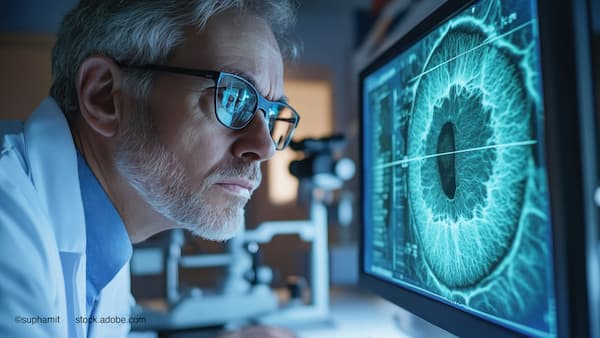News
Video
Envision Summit 2025: Beyond the status quo in gene therapy
Author(s):
At the Envision Summit 2025 in San Juan, Puerto Rico, Mike Farkas, MD, discussed gene therapy research for retinal degenerations that sidetracks the current "status quo" therapies of AAV-based replacement and CRISPR-Cas9 genome editing.
At the Envision Summit 2025 in San Juan, Puerto Rico, Mike Farkas, MD, discussed gene therapy research for retinal degenerations that sidetracks the current "status quo" therapies of AAV-based replacement and CRISPR-Cas9 genome editing.
Video Transcript:
Editor's note: The below transcript has been lightly edited for clarity.
Mike Farkas, MD:
I'm Mike Farkas, I'm an associate professor at the Department of Ophthalmology at the University of Buffalo. Our work focuses on gene therapy for retinal degenerations, but specifically side tracking the current, what we call status quo therapies of AAV-based replacement and CRISPR-Cas9 genome editing.
So what we're working on are RNA-based therapies that kind of get around the problems of AAV and CRISPR, while also reducing the cost. So the idea behind this research is not only make a long-lasting therapy, but one that anyone can afford. Similar to the RNA vaccines that we're used to now. So the issues with AAV that are known are the, one, the high cost, but two, the what's now being found out from luxturna with the RPE atrophy after treatment. Which is due to the virus particle and the inflammatory response. So we're trying to circumvent both, having a biological particle but also the inflammatory response that the cells can recognize and cause the atrophy.
Genome editing, while it sounds great, from a perspective of efficiency is very low. And not only that, with 300 known genes to cause retinal dystrophies, there are thousands of mutations that would need to be corrected, and this is too inefficient. It would take too long to make it through the FDA process. So what we would like to do is both circumvent the AAV and the CRISPR with a therapy that can be easily developed, long-lasting, and be developed quickly enough so that we can treat everyone that may have a visual dystrophy due to genetic mutations.
Newsletter
Don’t miss out—get Ophthalmology Times updates on the latest clinical advancements and expert interviews, straight to your inbox.




